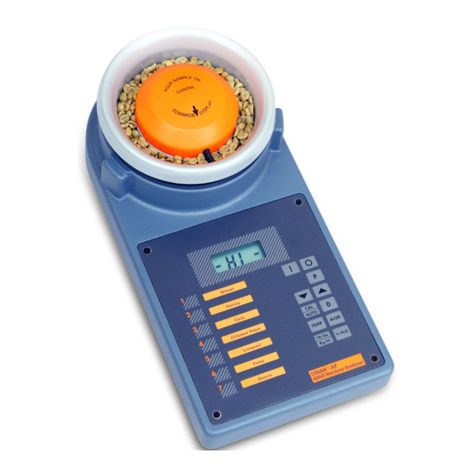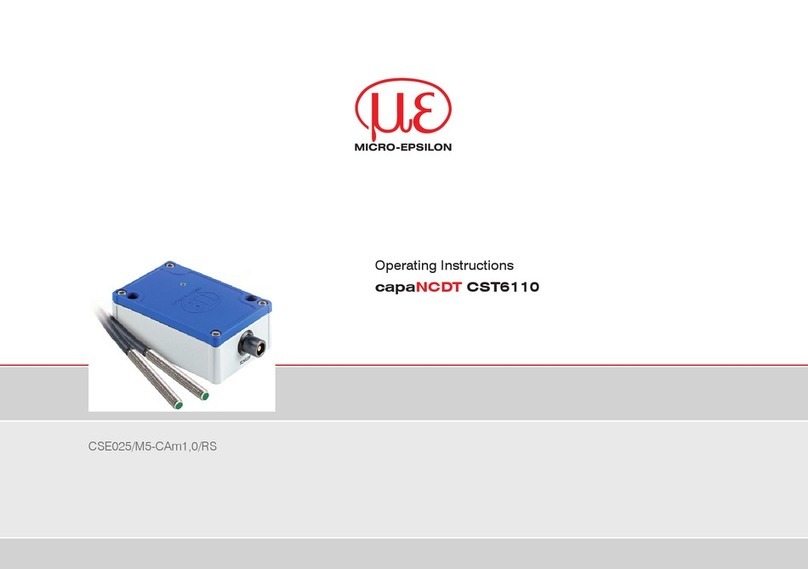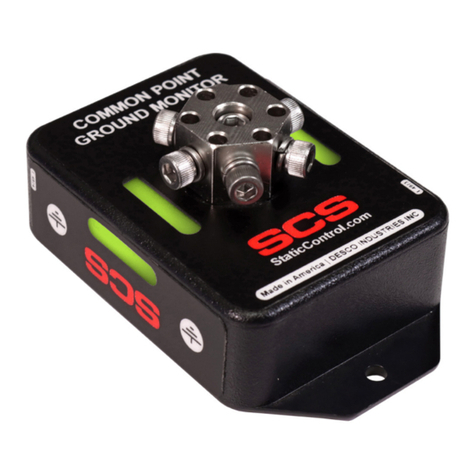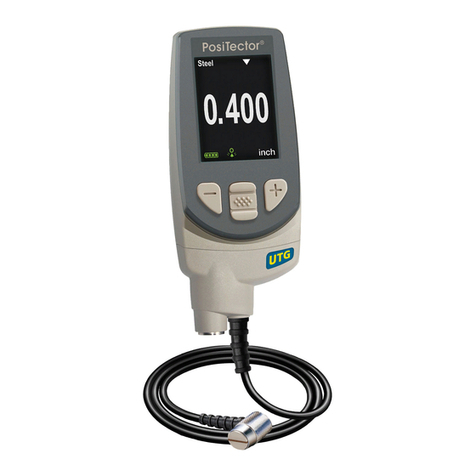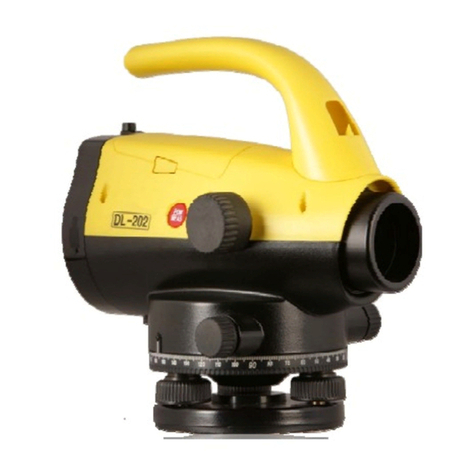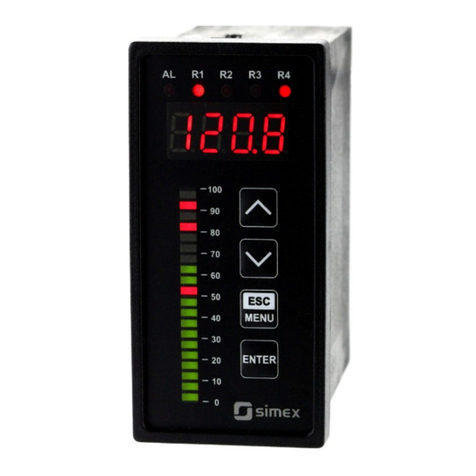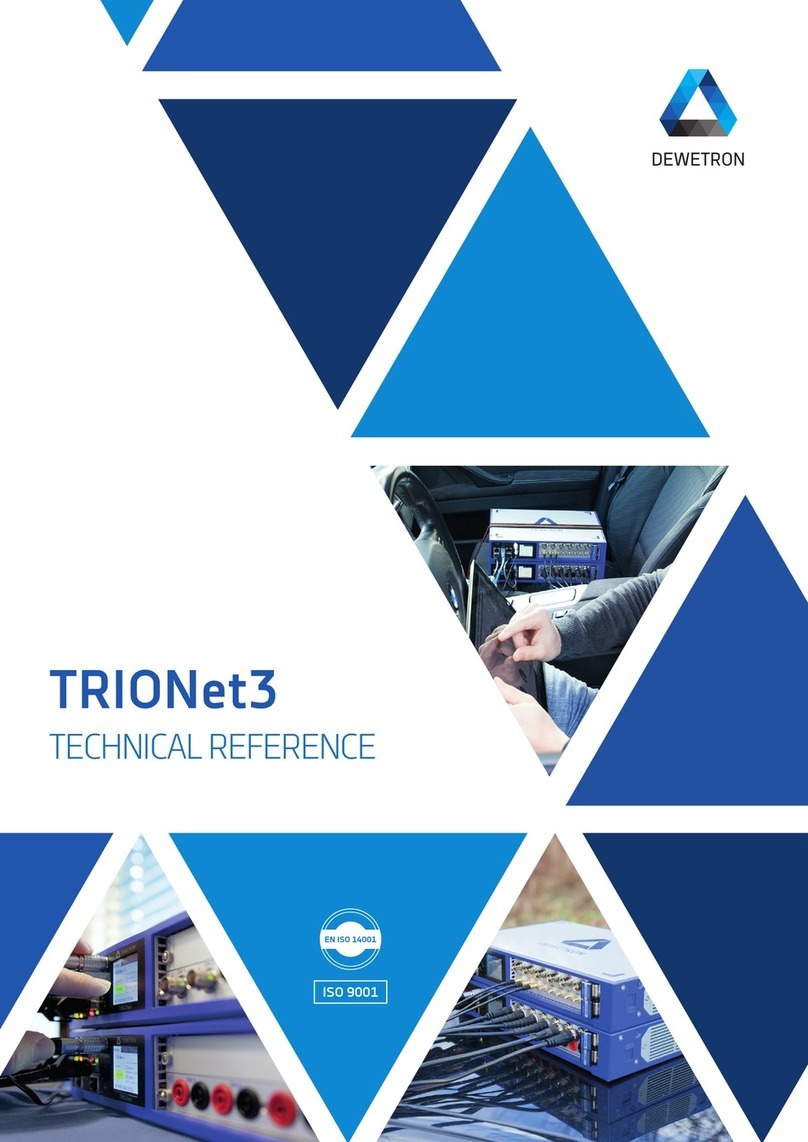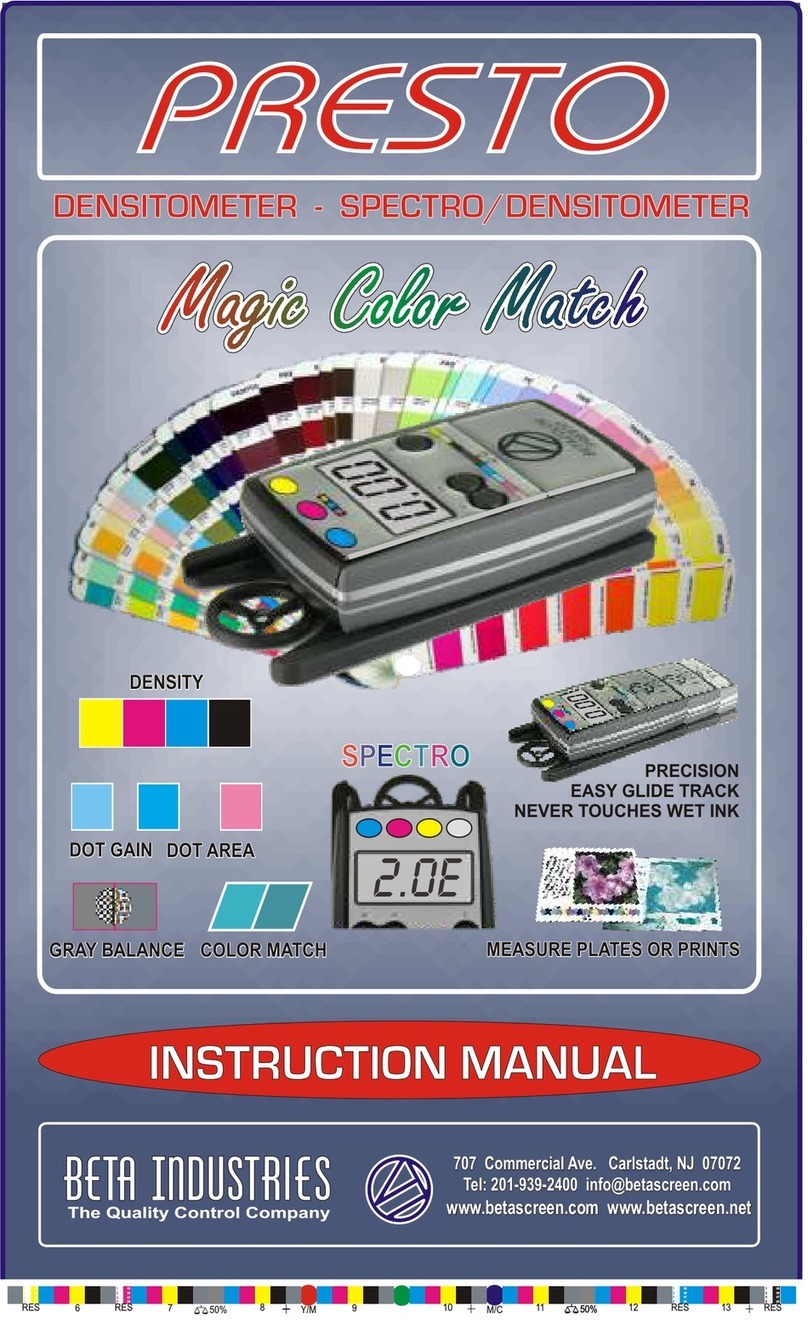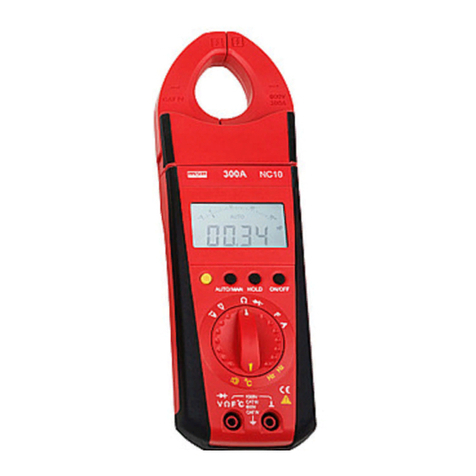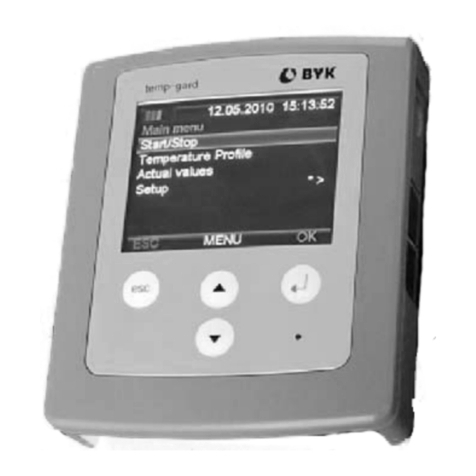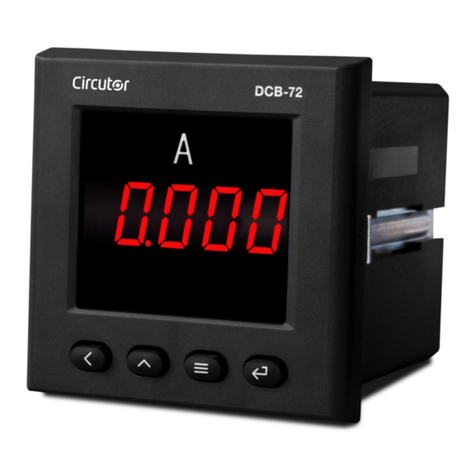Treetech GMP User manual

GMP
Gas and Moisture Sensor

[ Manual - GMP | MAN-001 | 02/24/2022 | Review: 1.00]
2
Contents
1Foreword....................................................................................................................6
1.1 Legal information................................................................................................................................... 6
1.1.1 Disclaimer .......................................................................................................................................... 6
1.2 Presentation........................................................................................................................................... 6
1.3 Typographical conventions .................................................................................................................... 6
1.4 General and safety information............................................................................................................. 7
1.4.1 Safety symbols................................................................................................................................... 7
1.4.2 General symbols ................................................................................................................................7
1.4.3 Minimum profile recommended for GMP operator and maintainer................................................8
1.4.4 Environmental and voltage conditions required to installation and operation of the GMP............. 8
1.4.5 Test and installation instructions.......................................................................................................9
1.4.6 Cleaning and decontamination instructions....................................................................................10
1.4.7 Inspection and maintenance instructions .......................................................................................10
1.5 Technical support................................................................................................................................. 11
1.6 Warranty terms and conditions........................................................................................................... 12
2Introduction .............................................................................................................13
2.1 Characteristics and functions............................................................................................................... 14
2.2 Basic functioning philosophy ............................................................................................................... 15
2.2.1 Periodic analysis of dissolved gases.................................................................................................15
2.2.2 Continuous monitoring of dissolved gases in oil .............................................................................16
2.2.3 Methodology for online monitoring of dissolved gases on oil ........................................................ 16
2.2.3.1 Measurement of the hydrogen concentration........................................................................................16
2.2.3.2 Representativeness on the measurement ..............................................................................................17
3Project and installation.............................................................................................18
3.1 System topology .................................................................................................................................. 18
3.2 Mechanical installation ........................................................................................................................ 19
3.2.1 Mechanical installation procedure..................................................................................................20
3.3 Electric installation...............................................................................................................................23
3.3.1 Input and output terminals ............................................................................................................. 25
4Operation.................................................................................................................28
4.1 Readout and display LEDs.................................................................................................................... 28
4.2 Key functions........................................................................................................................................29
4.3 Alarm LEDs ...........................................................................................................................................29
4.4 Auxiliary indications............................................................................................................................. 29
4.5 Self-diagnostics .................................................................................................................................... 30
5Parameterization......................................................................................................32
5.1 Access to parameterization menus...................................................................................................... 32
5.2 Structure of parameterization menus .................................................................................................33
5.3 CLCK menu ...........................................................................................................................................35
5.4 CONF menu.......................................................................................................................................... 36
5.5 OIL menu..............................................................................................................................................38
5.6 Menu H2 .............................................................................................................................................. 40
5.7 ALARM menu ....................................................................................................................................... 41
5.8 ADVC menu.......................................................................................................................................... 44
5.8.1 CONF submenu................................................................................................................................ 44
5.8.2 LOG submenu ..................................................................................................................................44
5.8.3 RLAY submenu.................................................................................................................................45
5.8.3.1 RL1 to RL4 submenus ..............................................................................................................................45
5.8.3.1.1 RDET –Detailed relays........................................................................................................................46

[ Manual - GMP | MAN-001 | 02/24/2022 | Review: 1.00]
3
5.8.3.2 RLYT submenu.........................................................................................................................................48
5.8.4 ANOU submenu ............................................................................................................................... 48
5.8.4.1 ANOT submenu .......................................................................................................................................49
6Problems resolution .................................................................................................50
6.1 Self-diagnosis ....................................................................................................................................... 50
6.2 Resolution of problems unrelated to GMP self-diagnosis ...................................................................52
7Commissioning .........................................................................................................54
8Technical data and type tests....................................................................................55
8.1 Technical data ...................................................................................................................................... 55
8.2 Type tests............................................................................................................................................. 57
9Purchase order specification.....................................................................................58

[ Manual - GMP | MAN-001 | 02/24/2022 | Review: 1.00]
4
Illustrations
Figure 1 - Gas and Moisture Specialist Sensor ......................................................................................................13
Figure 2 - Composition of the gas and humidity monitoring system ....................................................................18
Figure 3 - Equipment dimensions.......................................................................................................................... 19
Figure 4 - Distance for sensor installation............................................................................................................. 20
Figure 5 - GMP electrical connection diagram ...................................................................................................... 24
Figure 6 - GMP socket with numbered terminals..................................................................................................24
Figure 7 - Connections and grounding in the RS-485 communication network.................................................... 26
Figure 8 - GMP front display.................................................................................................................................. 28
Figure 9 - Self-diagnosis display.............................................................................................................................31
Figure 10 –Structure of menus and submenus..................................................................................................... 34

[ Manual - GMP | MAN-001 | 02/24/2022 | Review: 1.00]
5
Tables
Table 1 - Operation conditions 9
Table 2 - Input and output terminals 25
Table 3 - Maximum load of analog output options 27
Table 4 - GMP key functions 29
Table 5 - Typical values of water solubility in oil types (A) 38
Table 6 - Typical values of water solubility in oil types (B) 39
Table 7 - List of analog output parameters 49

[ Manual - GMP | MAN-001 | 02/24/2022 | Review: 1.00]
6
1Foreword
1.1 Legal information
The information contained in this document is subject to changes without prior notice.
This document belongs to Treetech Sistemas Digitais Ltda. and may neither be copied,
transferred to third parties nor used without express authorization, in terms of Brazilian law
9.610/98.
1.1.1 Disclaimer
Treetech Sistemas Digitais reserves the right to make changes without prior notice in all
products, circuits and functionalities described herein with the aim of improving their
reliability, function or design. Treetech Sistemas Digitais does not assume any liability resulting
from application or use of any product or circuit described in here and does not transmit any
licenses or patents under its rights, not even third party rights.
Treetech Sistemas Digitais Ltda. may own patent or other types of registrations and
intellectual property rights described in the content of this document. Possession of this
document by any person or entity does not give such person or entity any right over these
patents or registrations.
1.2 Presentation
This manual presents all the recommendations and instructions for installation, operation and
maintenance of the Gas and moisture specialist sensor - GMP.
1.3 Typographical conventions
Throughout this text, the following typographical conventions were adopted:
Bold: Symbols, terms and words that are in bold have greater contextual importance.
Therefore, pay attention to these terms.
Italics: Terms in foreign language, alternative or with their use outside the formal situation are
written in italics.
Underlined: References to external documents.

[ Manual - GMP | MAN-001 | 02/24/2022 | Review: 1.00]
7
1.4 General and safety information
This section presents relevant aspects of safety, installation and maintenance of the GMP.
1.4.1 Safety symbols
This manual uses three types of risk classification, as shown below:
1.4.2 General symbols
This manual uses the following general symbols:
Warning:
This symbol is used to alert the user of potentially dangerous operating or maintenance
procedures in which higher caution must be taken. Minor or moderate injuries may occur, as
well as damage to the equipment.
Caution
This symbol is used to alert the user of a potentially dangerous operating or maintenance
procedure which demands extreme caution in its conduction. There may occur serious injuries
or even death. Possible damages to the equipment may be irreparable.
Risk of electric shock
This symbol is used to alert the user of an operating or maintenance procedure that may result in
electric shock if not strictly overseen. There may be minor, moderate, serious injuries or death.
Important
This symbol is used to highlight important information.
Tip
This symbol represents instructions to facilitate GMP usage and accesses to its information.

[ Manual - GMP | MAN-001 | 02/24/2022 | Review: 1.00]
8
1.4.3 Minimum profile recommended for GMP operator and maintainer
Installation, maintenance and operation of equipment in electric power substations require
special cares and, therefore, all recommendations of this manual, applicable standards, safety
procedures, safe work practices and good judgment must be used during all handling stage of
Gas and Moisture Specialist Sensor - GMP.
To handle GMP, the operator should:
1. The operator or maintainer must be trained and authorized to operate, ground, turn
on and turn off the GMP, following maintenance procedures according to the safety
practices established, under the sole responsibility of the GMP operator and
maintainer;
2. Be trained in the use of PPEs, CPEs and first-aid;
3. Be trained in the working principles of the GMP, as well as its configuration;
4. Follow regulatory recommendations regarding interventions in any type of equipment
included in an electric power system.
1.4.4 Environmental and voltage conditions required to installation and
operation of the GMP
The table below lists important information on the environmental and voltage requirements.
Only authorized and trained staff –operators and maintainers –should handle this equipment.

[ Manual - GMP | MAN-001 | 02/24/2022 | Review: 1.00]
9
Table 1 - Operation conditions
Condition
Range/description
Application
Equipment for outdoor use in substations,
industrial and similar environments.
Indoor/outdoor use
Outdoor use
Protection level (IEC 60529)
IP66 (NEMA4)
Altitude* (IEC EN 61010-1)
Up to 2000 m
Temperature (IEC EN 61010-1)
Operation
-40...+85 °C
Process
-10...+90 °C
Storage
-50...+95 °C
Relative humidity (IEC EN 61010-1)
Operation
0...100 % - condensed or Uncondensed
Storage
0...100 % - condensed or Uncondensed
Supply voltage fluctuation
(IEC EN 61010-1)
Up to ±10 % of rated voltage
Overvoltage (IEC EN 61010-1)
Category II
Pollution level (IEC EN 61010-1)
level 3
Atmospheric pressure** (IEC EN 61010-1)
80...110 kPa
*Altitudes above 2000 m already have successful applications.
**Pressure below 80 kPa already have successful applications.
1.4.5 Test and installation instructions
This manual must be available for those responsible for installation, maintenance and users of the
Gas and Moisture Specialist Sensor- GMP.
To ensure user safety, equipment protection and correct operation, the following minimum
precautions must be followed during the GMP installation and maintenance.
1Read this manual carefully before installing, operating or performing maintenance on
the GMP. Errors in installation, maintenance or in the GMP adjustments can cause
undue alarms, fail to issue relevant alarms and thus, cause misunderstanding of the
actual state of health and functioning of the transformer.
2Installation, adjustments and operation of the GMP must be done by trained
personnel familiar with power transformers insulated with mineral or vegetable oil,
control devices and control circuits of substation equipment.
3Special attention must be given to the installation of the GMP, including the type and
gauge of cables, installation location and commissioning, including the correct
parameterization of the equipment.

[ Manual - GMP | MAN-001 | 02/24/2022 | Review: 1.00]
10
1.4.6 Cleaning and decontamination instructions
By having IP66 protection, cleaning the GMP can be done easily. You can use a cloth with soap,
detergent diluted in water or even ethyl alcohol to clean the entire surface of the equipment.
However, avoid the use of aggressive and corrosive chemical solvents that could damage the
polycarbonate front of the equipment.
1.4.7 Inspection and maintenance instructions
For GMP inspection and maintenance, the following observations must be followed:
GMP can be installed outdoor (exposed to weather) as long as the temperature does not
overpass the one specified for the equipment.
Prioritize GMP installation in places with high oil flow and lowest temperature possible. Stagnant
or poorly circulating oil can compromise the sensor's reading accuracy, while high temperatures
will reduce its useful life. See topic Error! Reference source not found. to learn more about
representativeness in measurements.
Do not open the equipment. There are no parts to be repaired by the user inside it. This
procedure must be done only by Treetech technical support, or professionals certified by
Treetech.
This equipment is completely maintenance free, and visual and operational inspections, periodic
or not, can be done by the user. These inspections are not mandatory.
Opening the GMP at any time will lead to product warranty loss. In case of inappropriate
opening, Treetech can not ensure the product correct functioning, regardless of whether the
warranty period has expired or not.
Do not try to access the equipment's factory menu (FACT). When trying to access this menu with
the wrong password, the display will show the message VOID. After a few attempts, it will
completely block access to the equipment's menus and will void the warranty.

[ Manual - GMP | MAN-001 | 02/24/2022 | Review: 1.00]
11
1.5 Technical support
Treetech has a wiki where several frequent asked questions and guides are available to help
customers. It is worthy to check it through the link bellow.
Wiki
wiki.treetech.com.br
If you do not find an answer, by accessing our service desk it is possible to open a service call
for our SOS team to support you.
Service Desk
sac.treetech.com.br
In some cases, it is recommended to send the equipment to our technical support. To do so,
follow the steps described in our wiki.
Procedure to sending IED to technical support
treetech.atlassian.net/wiki/x/AgCuNQ
For more information, talk to us through the contacts available at the link bellow.
Contact
treetech.com.br/contato/assistencia-tecnica/
All parts of this equipment must be supplied by Treetech, or by one of its accredited suppliers,
according to its specifications. If the users wish to acquire them in another way, they must
strictly follow Treetech’s specifications for this purpose. Thus, performance and safety for the
user and the equipment will not be compromised. If these specifications are not followed, the
user and the equipment may be exposed to unforeseen risks.

[ Manual - GMP | MAN-001 | 02/24/2022 | Review: 1.00]
12
1.6 Warranty terms and conditions
The Gas and Moisture Specialist Sensor –GMP will be guaranteed by Treetech for a period of
2 (two) years, counted from the date of purchase, exclusively against any manufacturing or
quality defects that cause it to be improper for regular use.
The warranty will not cover product damage suffered as result of accidents, mistreatment,
incorrect handling, incorrect installation and application, inadequate testing or in case of
breach of the warranty seal.
Any need for technical assistance must be communicated to Treetech or its authorized
representative, with the presentation of the equipment along with the respective proof of
purchase.
No express or implied warranties other than those mentioned above are provided by
Treetech.
Treetech does not provide any guarantee of suitability of the GMP for a particular application.
Seller shall not be liable for any damage to property or for any loss and damage arising out of,
connected with, or resulting from the purchase of the equipment, its performance or any
services possibly provided along with the GMP. In no event shall the seller be liable for
damages incurred, including, but not limited to: loss of profits or income, impossibility of using
the GMP or any associated equipment, capital costs, costs of purchased energy, costs of
equipment, facilities or substitute services, downtime costs, complaints from buyers’
customers or employees, regardless of whether such damages, claims or damages are based
on contract, warranty, negligence, tort or otherwise. Under no circumstances will the seller
be liable for any personal injury of any kind.

[ Manual - GMP | MAN-001 | 02/24/2022 | Review: 1.00]
13
2Introduction
Figure 1 - Gas and Moisture Specialist Sensor
Insulating oils are applied in high and extra high voltage equipment as a dielectric medium,
given the high potential differences to which they are subjected, and as a heat transport
element, increasing the efficiency of cooling systems. Other solid cellulose-based insulating
materials, such as paper, cardboard and wood, are often used in conjunction with the
insulating oil. Some of the most common application examples are power and current
transformers and shunt reactors.
Since such equipment plays essential roles in electrical power systems, eventual failures can
cause great losses, not only due to damage to the equipment, but also due to loss of revenue,
contractual fines and reduced reliability of the power system. In this context, the monitoring
of gases dissolved in the oil plays a fundamental role in diagnosing the status of the
equipment, being able, in many cases, to detect failures in their incipient phase, in addition to
pointing out possible causes.
Abnormal operating conditions, such as hot spots, partial discharges or electrical arcs lead to
decomposition of the insulating oil and/or cellulose, with the formation of combustible gases
that dissolve in the oil. The gases formed and their concentrations depend on the temperature
and energy of the fault and the materials involved, including H2, CO, CO2and low molecular
weight hydrocarbons such as CH4, C2H6, C2H4e C2H2. As hydrogen (H2) is formed by the
decomposition of oil at all fault temperatures, the increase in its concentration is considered
a universal indicator of the presence of an equipment failure.
For this reason, Treetech's GMP performs online monitoring of hydrogen dissolved in the
insulating oil, since it is considered a key gas for defect detection in equipment immersed in
oil. GMP performs the measurement without cross interference from other gases, such as
methane (CH4) for example, in order to obtain maximum sensitivity in detecting defects,
without alterations in hydrogen being covered up by constant and high concentrations of
these other gases.

[ Manual - GMP | MAN-001 | 02/24/2022 | Review: 1.00]
14
In addition, GMP also monitors the moisture in the oil, a factor that can influence the dielectric
strength of the oil, cellulosic insulation and the rate of aging of these insulators. To ensure
monitoring and enable good moisture control, the GMP measures two important factors:
water content and relative saturation. The water content does not depend on the
temperature, type or condition of the oil, but together with the constant value of water
solubility in oil, the GMP shows the so-called relative saturation, which is the result between
the division of the absolute content for solubility.
In summary, monitoring the relative saturation is an important factor, as the water dissolved
in the oil reduces the insulating capacity, may cause bubbles and accelerate the aging of
insulating media, while monitoring hydrogen (H2) can indicate defects and malfunction of the
asset.
2.1 Characteristics and functions
COMPACT AND VERSATILE
The GMP has compact dimensions,
providing space and installation cost
savings. It also has a valve or small thread,
which increases the number of options for
installing the sensor, facilitating the ideal
installation in places with large oil flow.
ROBUST HARDWARE
The GMP design exceeds EMC
(Electromagnetic Compatibility) standards
to withstand severe substation
electromagnetic conditions and operating
temperature from -40 to 85 °C. It also has
IP66 protection, withstanding harsh
installation and weather conditions.
SELF-SUFFICIENCY
The equipment has a LED screen for
displaying measurements and alarms. Its
parameterization can also be done directly
from the front using the touch-sensitive
keys. The use of other interfaces is
optional.
MEASUREMENT AND INDICATION OF H2
AND H2O
It performs the real-time measurement
and indication of the hydrogen dissolved in
the oil, its evolution trend and the time
forecast, in days, to reach the alarm levels.
Likewise, the equipment also indicates the
values of relative saturation (%) and
content (ppm) of water in oil.

[ Manual - GMP | MAN-001 | 02/24/2022 | Review: 1.00]
15
INDICATION ALARMS FOR DE H2AND H2O
CONCENTRATION
High and very high indication alarms are
issued for H2and H2O concentrations.
Alarms are also issued for trends in the
evolution of these values.
REAL TIME INDICATION OF OIL
TEMPERATURE
As well as measuring gas and humidity, the
oil temperature is also monitored and
displayed in real time.
PROGRAMMABLE OUTPUT RELAYS
4 configurable relays are available which,
operating normally open or normally
closed, can be actuated simultaneously
with the desired alarms.
CURRENT LOOP OUTPUTS
Two current loop outputs are available.
Each output can provide measurement
data for any of the 10 monitored variables.
The output current range is also
configurable.
SELF-DIAGNOSIS
The equipment has a system to detect
internal failures or lack of power. Bringing
greater reliability in your measurements
and linked controls.
OPEN COMMUNICATION
A RS-485 port is available for
communication with monitoring or
supervisory systems. Communication
protocols are open - Modbus® RTU and
DNP3.
2.2 Basic functioning philosophy
2.2.1 Periodic analysis of dissolved gases
The analysis of gases dissolved in oil (DGA - Dissolved Gas Analysis) has been used and
recognized worldwide as an efficient tool for the analysis and diagnosis of incipient failures in
transformers and high voltage equipment immersed in oil. It has also been widely used by
transformer manufacturers as a tool for evaluating the performance of their products and by
users of this equipment in preventive maintenance programs.
Despite this success, DGA is, in most cases, a laboratory method based on a program of manual
collection of oil samples periodically carried out on the equipment, with the frequency defined
accordingly to the relative importance of the equipment and any suspected defects. As a
result, failure with rapid gas evolution may not be detected in a first sampling and become
excessively worse until detected in the next sampling, or, in the worst case, lead to equipment
failure before the next analysis is carried out.
In addition to the main inconvenience presented above, periodic DGA also presents the risk
of error due to failure in the sample collection and transport processes to the laboratory and
the operation of the analysis equipment, thus requiring specialized labor.

[ Manual - GMP | MAN-001 | 02/24/2022 | Review: 1.00]
16
2.2.2 Continuous monitoring of dissolved gases in oil
The DGA in oil is, as mentioned above, a tool of indisputable importance for diagnosing the
status of equipment immersed in insulating oil, and its continuous performance enhances this
tool even more, eliminating the presented inconveniences. Obviously, this continuous
monitoring through the collection of oil samples is not feasible in practice or financially when
it is necessary to supervise dozens or hundreds of pieces of equipment.
On the other hand, it is currently not financially viable, in most applications, to install
equipment that performs the online measurement of all the combustible gases present in the
oil, as done in the laboratory with periodic samples. At first, this fact may lead us to believe in
the impossibility of continuous monitoring dissolved gases, which is not reality.
Work carried out by several researchers demonstrated that hydrogen is present, alone or
accompanied by other gases, in all insulating oil decomposition processes, constituting,
therefore, a kind of “universal indicator” of failures. Since the evolution of this key gas is
continuously monitored, it is possible to detect any problem that may develop in the
equipment at any time, although this measurement alone does not allow for an accurate
diagnosis of what is occurring.
Once the suspicion of an equipment problem is raised from the increase in the H2level, this
can be confirmed (or discarded) and investigated in depth by laboratory analysis of oil
samples. In this way, the time interval in which the equipment remains unsupervised is
eliminated, and the identification of incipient failure in a timely manner allows the user to
plan the steps necessary for its identification and take corrective actions, when necessary.
2.2.3 Methodology for online monitoring of dissolved gases on oil
Online monitoring of dissolved hydrogen as the key gas for fault detection in oil-immersed
equipment fills the gap in periodic DGA.
Treetech's GMP measures the concentration of H2in the oil, in order to continuously monitor
the evolution of this gas and detect elevations that indicate the existence of a possible defect
in the high voltage equipment.
2.2.3.1 Measurement of the hydrogen concentration
The sensors used by the GMP to measure gas and humidity concentrations work with a
technology using semiconductors, which eliminates cross-sensitivity to other combustible
gases. Once energized, the GMP initializes the gas sensors for a period of 1 hour before
actually starting this measurement.
Since the phenomena of generation and dispersion of gases in high voltage equipment have
long time constants, the GMP response to changes in the concentration of hydrogen in the oil
has a time constant of approximately 8 hours.

[ Manual - GMP | MAN-001 | 02/24/2022 | Review: 1.00]
17
2.2.3.2 Representativeness on the measurement
For the entire process of measuring dissolved hydrogen as described above to be effective for
the equipment diagnosis, it is necessary that the oil in contact with the GMP sensor (and
consequently the dissolved hydrogen in it) is representative of the general situation of the
transformer.
The natural circulation of oil inside the tank contributes to this condition, due to convection
currents, caused by temperature differences between heat sources inside the equipment and
heat dissipation points, such as radiators and side walls.
For this reason, the ideal is that the gas monitor to be installed in a place where there is a lot
of oil movement, such as some of the side walls of the transformer or the inlet/outlet pipes of
the radiators. Please visit the following link to view possible GMP installation locations in order
of priority.
Locations for installing the GMP
treetech.atlassian.net/wiki/x/AQCSSg

[ Manual - GMP | MAN-001 | 02/24/2022 | Review: 1.00]
18
3Project and installation
3.1 System topology
The Gas and Moisture Specialist Sensor works autonomously, allowing few modules in your
system and easy installation.
Figure 2 - Composition of the gas and humidity monitoring system
The items required for the installation and operation of the Gas and Moisture Specialist Sensor
- GMP are:
●Gas and Moisture Specialist Sensor - GMP;
●Cables for auxiliary power and alarm contacts (if used);
●Shielded twisted-pair cable for RS-485 serial communication (if used);
●Shielded twisted 3-way cable for analog outputs (if used);
●Free flow valve (ball or gate) for GMP access to insulating oil.
Optional items for system composition:
●GMM-MMI remote interface module, used if the GMP is installed in a difficult-to-
access location, making it difficult to read the measurements on its local display,
or SD+ for expanding the output or communication interfaces.
Oil Temperature
Measurement
Dissolved Hydrogen
(H2) Measurement
Water Content
(H2O)
Measurement

[ Manual - GMP | MAN-001 | 02/24/2022 | Review: 1.00]
19
3.2 Mechanical installation
The Gas and Moisture Specialist Sensor - GMP must be installed in a place with good oil
circulation, such as radiator or heat exchanger piping, in a valve of at least 1/2" diameter with
free flow, ball type or gate, in order to allow the insertion of the GMP rod through the valve,
placing the tip of the rod in a place with oil circulation. This avoids the measurement of gas in
oil stagnant inside the valve. Thus, valves that do not allow free flow, such as the "globe" type,
should not be used.
The GMP has a 288 mm rod for connection. The free length of the rod for insertion of the GMP
into the oil flow is approximately 218 mm. Thus, the total distance from the valve tip to the
interior of the pipe or tank must be less than 218 mm, as shown in Figure 4, to ensure that the
end of the rod is inserted into the oil flow.
It should also be noted that the GMP operating temperature ranges from -40 to +85 °C.
Figure 3 - Equipment dimensions

[ Manual - GMP | MAN-001 | 02/24/2022 | Review: 1.00]
20
Figure 4 - Distance for sensor installation
3.2.1 Mechanical installation procedure
a) Remove the plastic cover that protects the end of the rod during transport.
b) Loosen the nut (1) of the fastening element (2).
Table of contents
